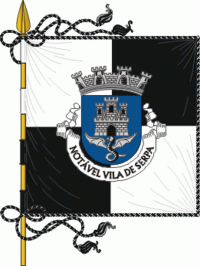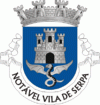Serpa Municipality (Serpa)
 |
 |
Serpa has its origins in early settlement that preceded the Roman occupation of the Iberian peninsula. The neighbouring town of Beja (known as Pax Julia by the Romans) became the capital of southern Lusitanian (Pacensis). Serpa grew through the settlement of Roman colonists, with proof coming from various archaeological remains within the Roman villa.
Moorish settlement followed this period, and remained until the Reconquista (the Christian re-conquest of Iberia).
As a result of Serpa's proximity to the Spanish border, the town has always been a defensive stronghold. In the 13th century, owing to its location on the left bank of the Guadiana, it was occupied by forces loyal to Castile.
On 1281, King D. Alfonso X of Castile delimited the municipality, attributing a Foral (charter) to the town, from Seville, in order to encourage settlement and expansion.
Following the Reconquista, in 1295, Serpa received a new foral from Portuguese King D. Dinis. The local keep that dominated Serpa was partly damaged as a result of the last Spanish invasion. At that time, the king ordered the re-construction of the castle, as well as the erection of a wall fortification.
A new foral was issued in 1513, by King D. Manuel I, who was the former master of Serpa. During the 17th century, the walls and system of bastions were adapted to serve as a defensive line by Nicolau de Langres (1665). On 30 January 1954, the walls of Serpa were classified as a Monumento Nacional (National Monument).
Following the Carnation Revolution (in 1974), the Portuguese Communist Party gained strong support in the area, where it continues to be popular.
On 26 August 2003, the town of Serpa was elevated to city status. Meanwhile, on 28 January 2013, the historic centre of Serpa (that included the principal civil parishes) of São Salvador and Santa Maria, was re-incorporated into a single civil parish (Decree 11-A/2013, Diário da República, Série 1, 19).
Map - Serpa Municipality (Serpa)
Map
Country - Portugal
 |
 |
| Flag of Portugal | |
One of the oldest countries in Europe, its territory has been continuously settled, invaded and fought over since prehistoric times. The territory was first inhabited by pre-Roman and Celtic peoples who had contact with Phoenicians, ancient Greeks and Carthaginians. It was later ruled by the Romans, followed by the invasions of Germanic peoples and the Islamic invasion by the Moors, whose rule was eventually expelled during the Reconquista. Founded first as a county of the Kingdom of León in 868, gained its independence as the Kingdom of Portugal with the Treaty of Zamora in 1143.
Currency / Language
| ISO | Currency | Symbol | Significant figures |
|---|---|---|---|
| EUR | Euro | € | 2 |
| ISO | Language |
|---|---|
| PT | Portuguese language |















